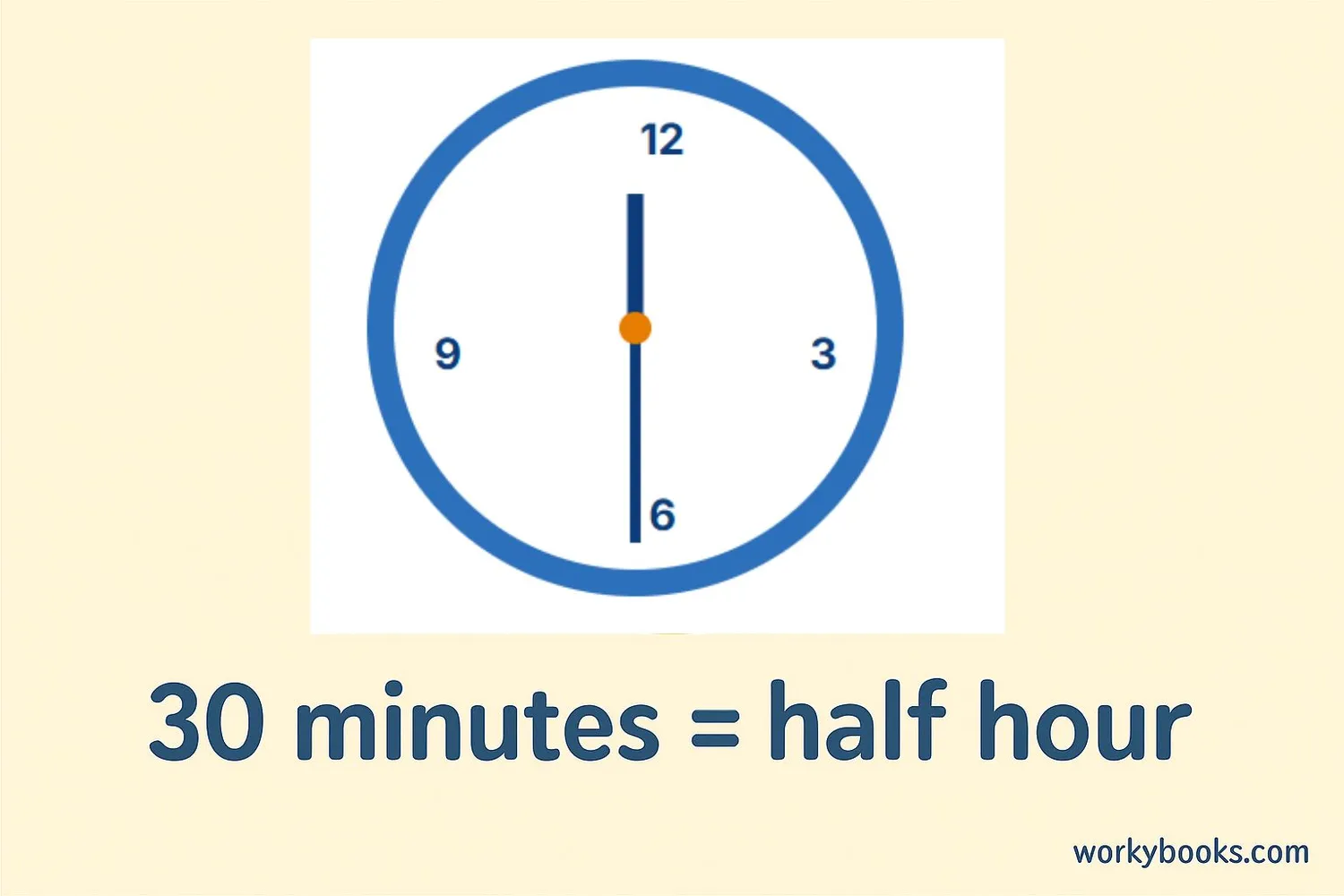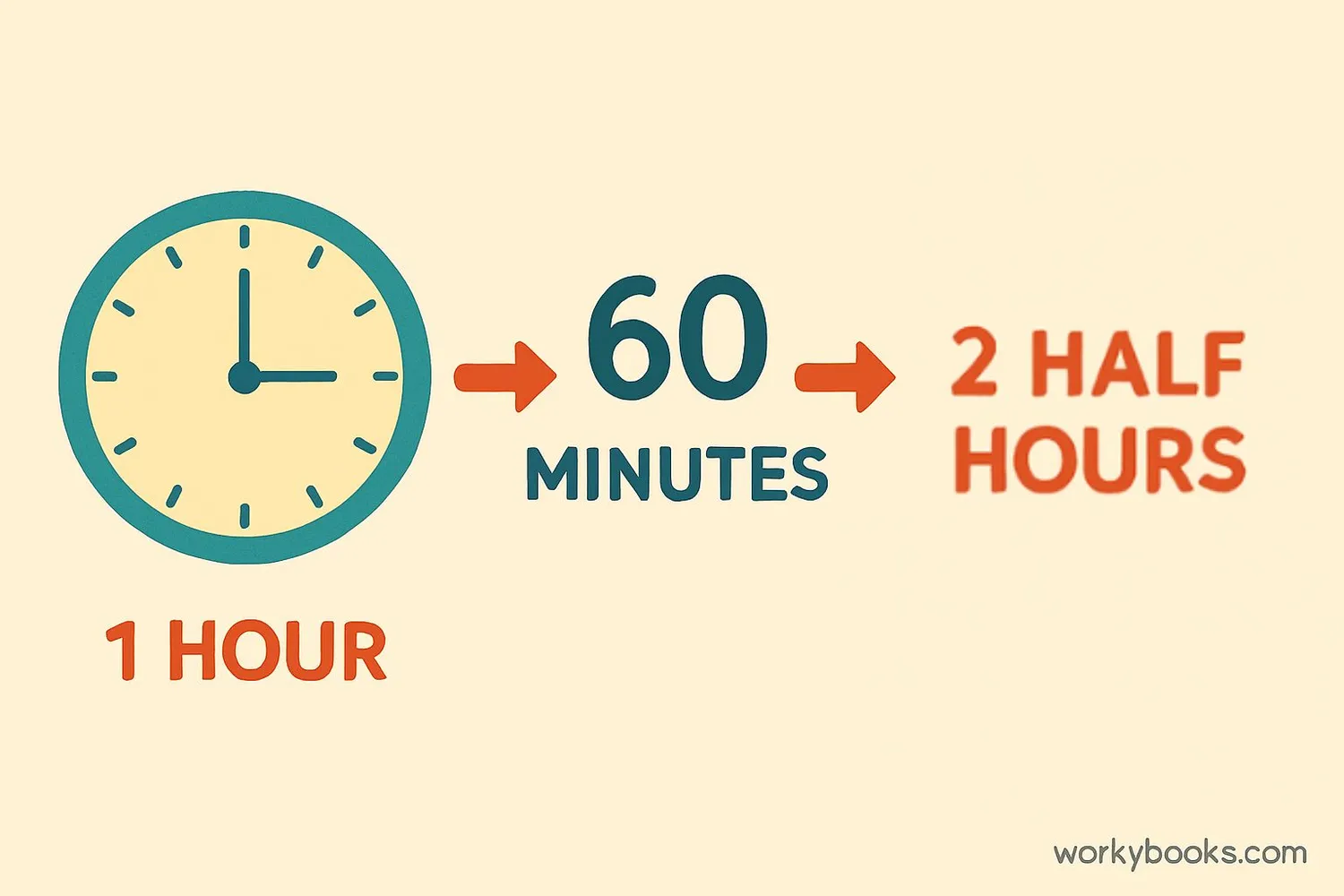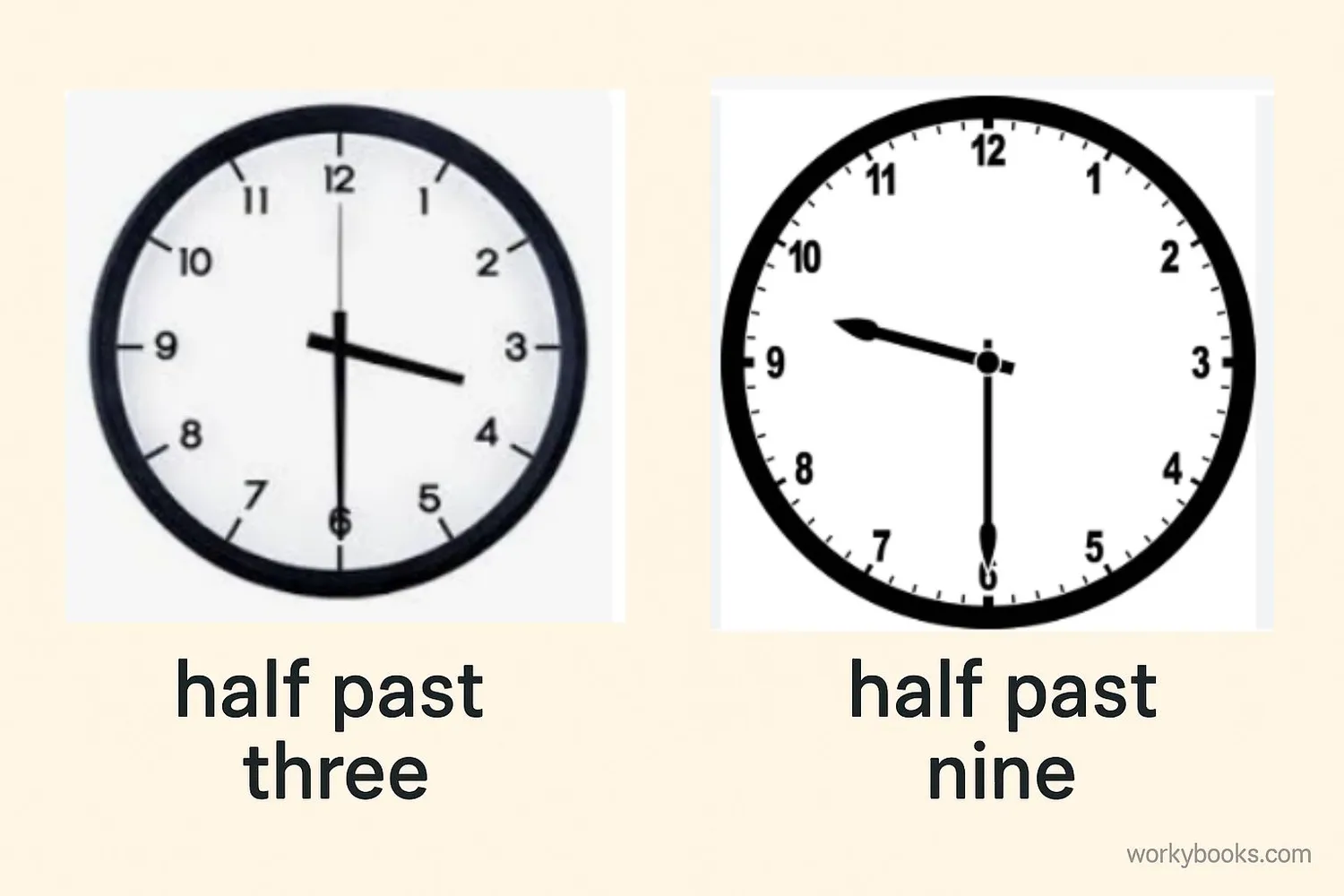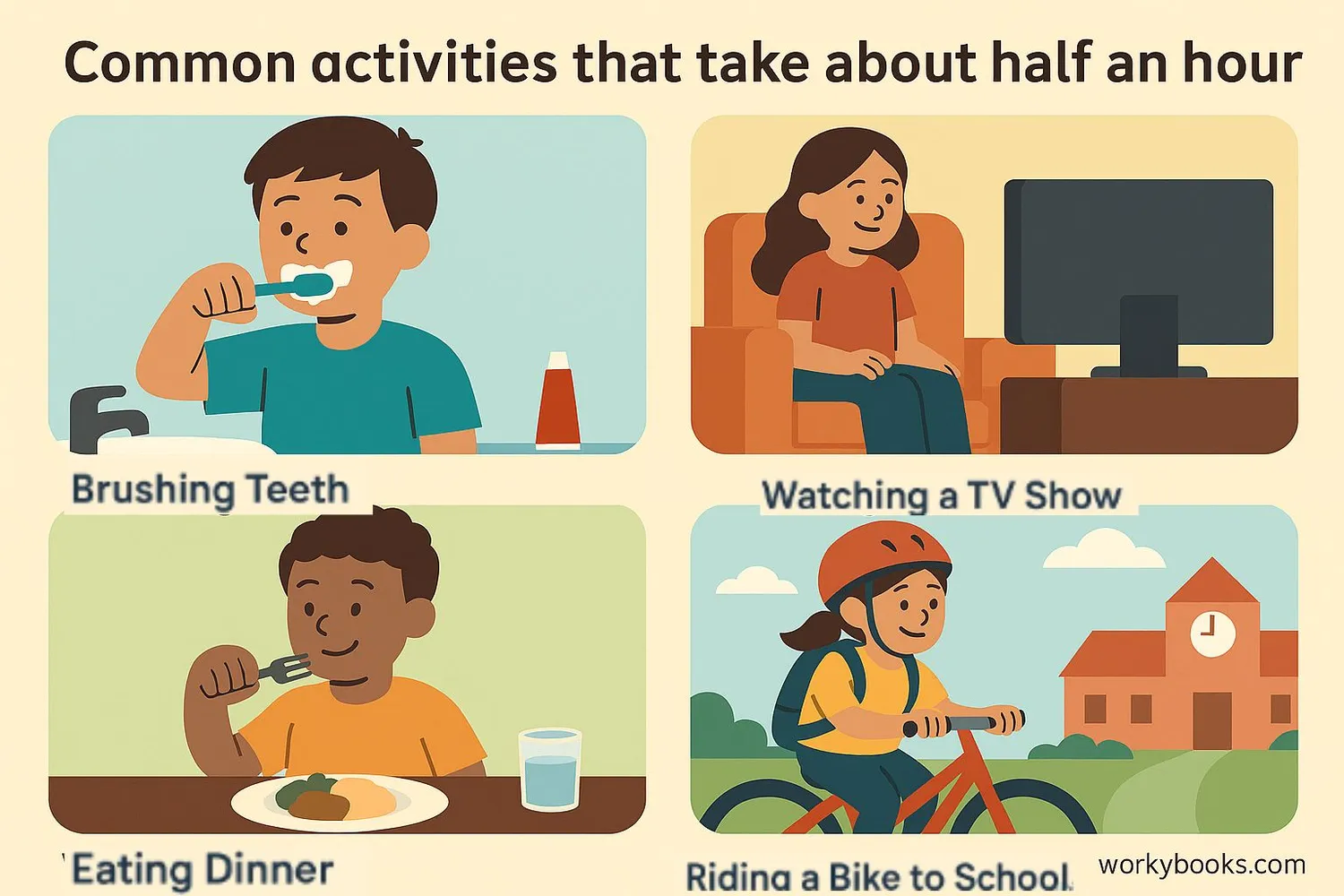Half Hour - Definition, Examples, Quiz, FAQ, Trivia
Learn about time measurement, how to read clocks, and practice with interactive activities
What is a Half Hour?

A half hour is a unit of time that equals 30 minutes. It's called "half hour" because it's exactly half of a full hour, which has 60 minutes.
When we talk about time, we often use half hours to describe when something happens or how long it takes. For example, you might have a half-hour break at school or watch a TV show that lasts for half an hour.
On a clock, a half hour is shown when the minute hand points to the 6. At this time, the hour hand will be exactly halfway between two numbers.
Key Concept
1 half hour = 30 minutes. This is always true, just like 2 half hours make a full hour.
Half Hour to Minutes

Converting between half hours and minutes is simple once you remember the basic relationship:
Conversion Formula
To convert any number of half hours to minutes, multiply by 30.
Example 1: How many minutes are in 2 half hours?
Step 1: Start with the number of half hours → 2
Step 2: Multiply by 30 → 2 × 30
Step 3: Calculate the result → 60 minutes
Example 2: How many half hours are in 90 minutes?
Step 1: Start with the number of minutes → 90
Step 2: Divide by 30 → 90 ÷ 30
Step 3: Calculate the result → 3 half hours
Remember
Since 1 half hour equals 30 minutes, 2 half hours equal 60 minutes (1 hour), and 4 half hours equal 120 minutes (2 hours).
Reading Half Hours on a Clock

Reading half hours on a clock is an important skill. Here's how to do it:
When the minute hand points to the 6 (the bottom of the clock), it means 30 minutes have passed since the last hour. This is the half hour mark.
At this time, the hour hand will be halfway between two numbers. For example:
- At 3:30, the minute hand points to 6, and the hour hand is halfway between 3 and 4
- At 9:30, the minute hand points to 6, and the hour hand is halfway between 9 and 10
We say "half past" when reading these times. So 3:30 is "half past three" and 9:30 is "half past nine".
Common Half Hour Times
| Digital Time | Analog Clock | How to Say It |
|---|---|---|
| 1:30 | Hour hand between 1 and 2 | Half past one |
| 4:30 | Hour hand between 4 and 5 | Half past four |
| 7:30 | Hour hand between 7 and 8 | Half past seven |
| 10:30 | Hour hand between 10 and 11 | Half past ten |
| 12:30 | Hour hand between 12 and 1 | Half past twelve |
Reading Tip
Remember: when the minute hand is on the 6, it's always a half hour past whatever hour the hour hand just passed.
Real-World Examples

Half hours are all around us in our daily lives. Here are some examples:
Example 1: School classes often last for half an hour. Special classes like art, music, or physical education might be 30 minutes long.
Example 2: Many TV shows are 30 minutes long. When you watch one episode of your favorite cartoon, you're watching for half an hour.
Example 3: If you start reading a book at 4:00 and read for half an hour, what time will it be when you finish?
Solution: 4:00 + 30 minutes = 4:30
Example 4: Your soccer practice lasts for 1.5 hours. How many half hours is this?
Solution: 1.5 hours = 90 minutes. 90 ÷ 30 = 3 half hours.
Look for half hours in your daily schedule - you might be surprised how often this time measurement appears!
Practice Tip
Try timing your daily activities to see which ones take about half an hour. This will help you develop a better sense of time.
Time Measurement Quiz
Test your understanding of half hours with this 5-question quiz. Choose the correct answer for each question.
Frequently Asked Questions
Here are answers to common questions about half hours and time measurement:
Time Measurement Trivia
Discover interesting facts about time measurement:
Ancient Timekeeping
The ancient Egyptians were among the first to divide the day into 24 hours around 4,000 years ago. They used sundials during the day and water clocks at night to track time.
Circadian Rhythms
Our bodies have natural 24-hour cycles called circadian rhythms. These internal clocks help regulate when we feel sleepy and when we wake up, even without looking at a clock!
Why 60 Minutes?
The Babylonians used a base-60 number system around 4,000 years ago. This is why we have 60 seconds in a minute and 60 minutes in an hour today.
Shortest Time Measurement
Scientists can measure time intervals as short as 0.0000000000000000001 seconds (that's 10-19 seconds)! This is used to study how atoms and molecules move and change.


